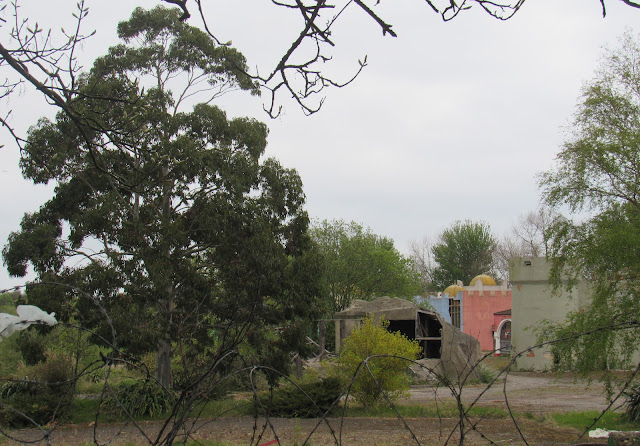 |
| Facing an uncertain future, but Pleasure Island has become a haven for songbirds |
THERE were tears all round when the Pleasure Island theme park at Cleethorpes in North East Lincolnshire closed at the end of the summer season four years ago.
Since its opening in May, 1993 - as a subsidiary of Yorkshire-based Flamingo Land - it had been a magnet for residents and holidaymakers who flocked to there to enjoy the rides and other attractions.
But visitor income fell behind costs, and its operators, the unusually-named DewarSavile Enterprises Ltd - headed by Melanie Wood - reluctantly decided to bring down the curtain in 2016.
Although the on-site pub, McCormack's Family Bar, reopened the following year, the rest of the site has been abandoned, with its rides and other assets sold off by auction.
There is no obvious sign that the site is currently being actively marketed so its future remains uncertain.
In the meantime, there has been a plus.
The 54-acre site has become what ecologists call an 'accidental' nature reserve - one rich in various habitats, ranging from copse to reed pond, which provide a refuge from the human world for scores of different birds, butterflies and mammals.
Access to casual visitors is barred, but Pleasure Island has probably become a nesting site for songbirds such as chiffchaffs, sedge warblers, blackcaps, robins, wrens, goldcrests and more.
Maybe there are swallows, bats and owls breeding in the myriad sheds and barns. On several occasions, this spring, a cuckoo has been calling loudly from aloft one of the trees.
Admittedly a long shot, but maybe it is already home to a pair or two of rare turtle doves, spotted flycatchers or black redstarts.
Is there an opportunity, here, for DewarSavile Enterprises? Could it re-open as a different sort of attraction - one with far lower running costs?
Below is a selection of photographs of the abandoned theme park as it is today, but please note - all were taken from the perimeter of the park, not from within.
As extensive signage and fencing make plain, Pleasure Island remains strictly out of bounds to the public.
It is protected by elaborate CCTV, dog patrols and other security.
The Wryneck says: Is Melanie Wood missing a trick with Pleasure Island? True it will never be a breeding home to iconic species such as puffins, ospreys or white storks, but that is not to say it does not accommodate some very interesting birdlife. Who is to say that there is not, for instance, a pair of bluethroats or Savi’s warblers nesting around the pond and reedbed. Eco-tourism is fast-growing, and there is no reason why organisations such as the RSPB and the county wildlife trusts need to have a stranglehold on nature reserves? There is plenty of scope for private enterprise - and not at great cost. If most of the habitat is already in situ (as it is at Pleasure Island), all that’s needed is a hide or viewing point and a booth to sell admission tickets. And if there are on-site catering facilities (which there are), so much the better. The garden centre-style gift shop and guided tours can come later.
 |














